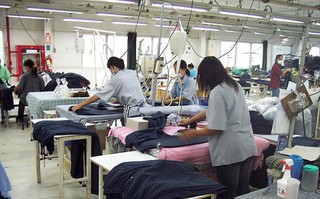 Thailand’s merchandise exports slipped back into slight negative growth in July, while manufacturing production was flat as manufacturers continued running down inventories, according to the latest data from Bank of Thailand (BOT).
Thailand’s merchandise exports slipped back into slight negative growth in July, while manufacturing production was flat as manufacturers continued running down inventories, according to the latest data from Bank of Thailand (BOT).
Overall economic activities were mostly unchanged from the previous month as improving domestic spending was offset by slow merchandise exports recovery, said BOT in a recent statement.
“Higher households’ and businesses’ confidence on the economic and political situation together with supportive households’ purchasing power helped private consumption to edge up from the previous month,” it continued.
But Thailand’s merchandise exports value, totaling US$18.7 billion, contracted on both month-on-month and year-on-year basis, led by exports of chemical products, petroleum, rubber, and electronics.
The decline was due to a number of factors, including the continued softening of demand from Asian economies, BOT said. Rubber prices have also dropped markedly, while a couple of refineries were closed for temporary maintenance.
In addition, Thai producers “continued to suffer from limited production capability in response to the increasing global demand toward high-technology items,” said BOT.
Saddled with high inventory levels, the manufacturing sector ran down stocks and maintained its production levels. Imports of raw materials and intermediate goods, as a result, remained low. In addition, a temporary maintenance shutdown of refineries and a drop in food and beverages production after an accelerated production in the previous period contributed to flat manufacturing production from the previous month.
Merchandise imports value, which stood at $17.249 billion, rose in July from the previous month mainly because of an increase in imports of capital goods.
“Nonetheless, overall merchandise imports remained low,” said the central bank.
Meanwhile, private investment slightly improved from last month, particularly construction in non-municipal areas, as overall private confidence rose.
In addition, some businesses started to invest after receiving approvals of investment projects and factory permits which had been held up in the preceding period.
Nevertheless, private investment remained in contraction compared with the same period last year, BOT stated.
Photo: Greg Walters




